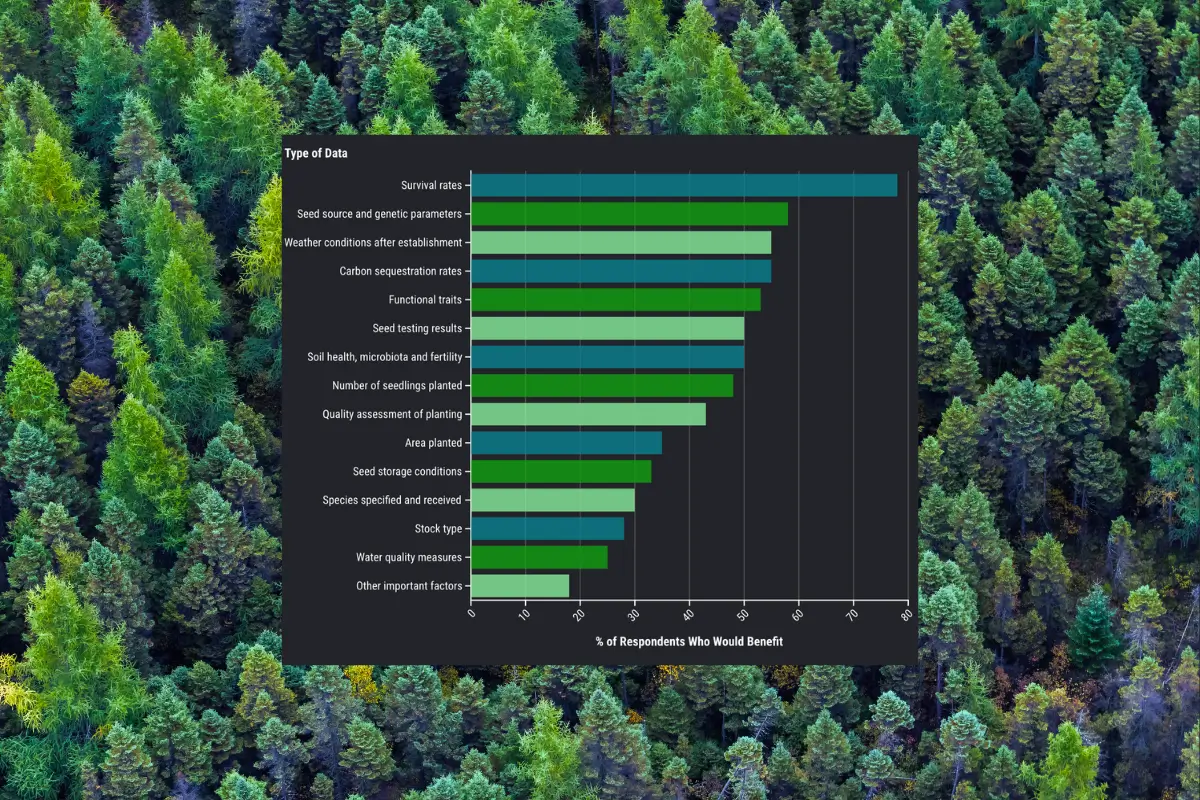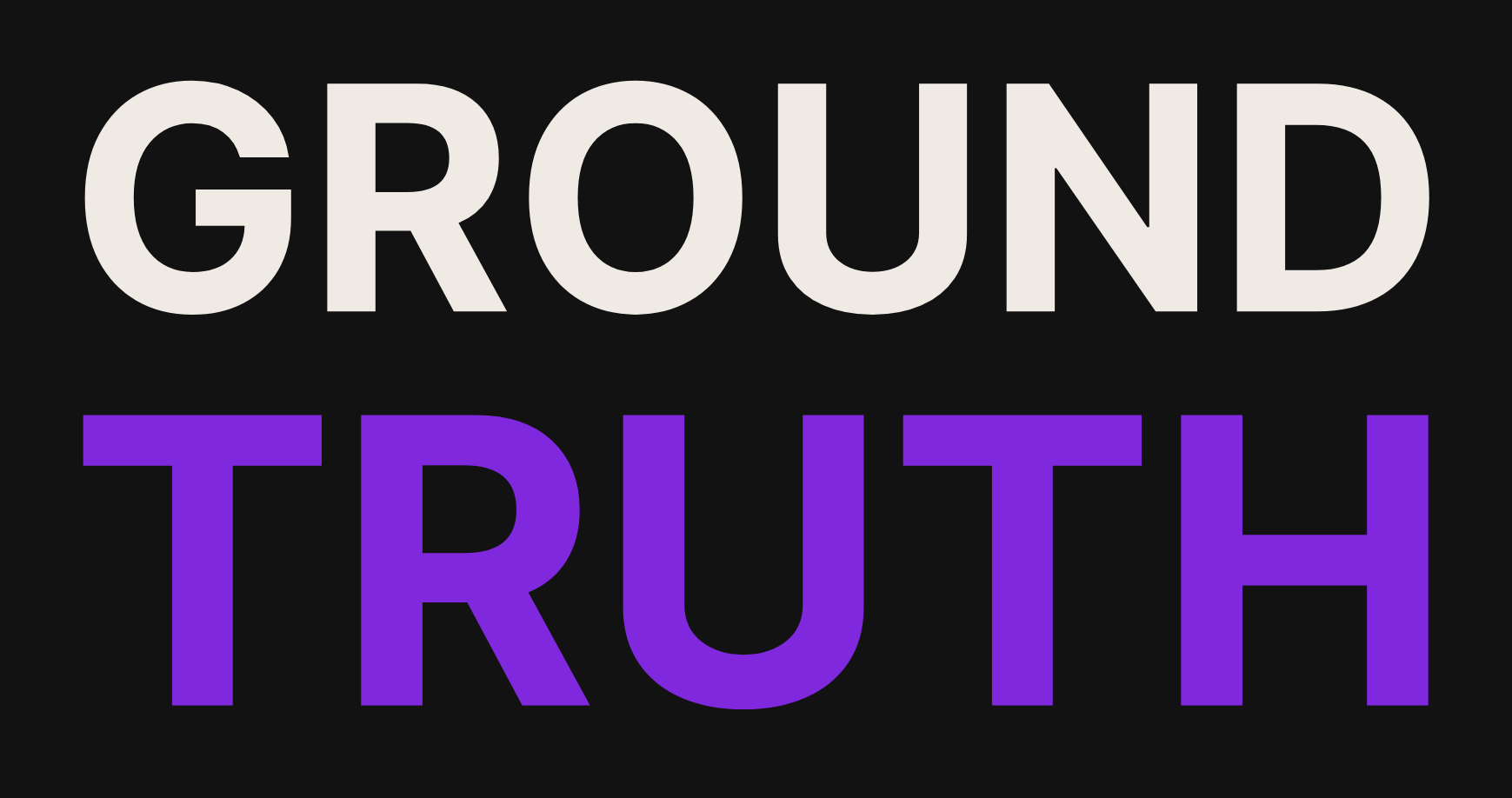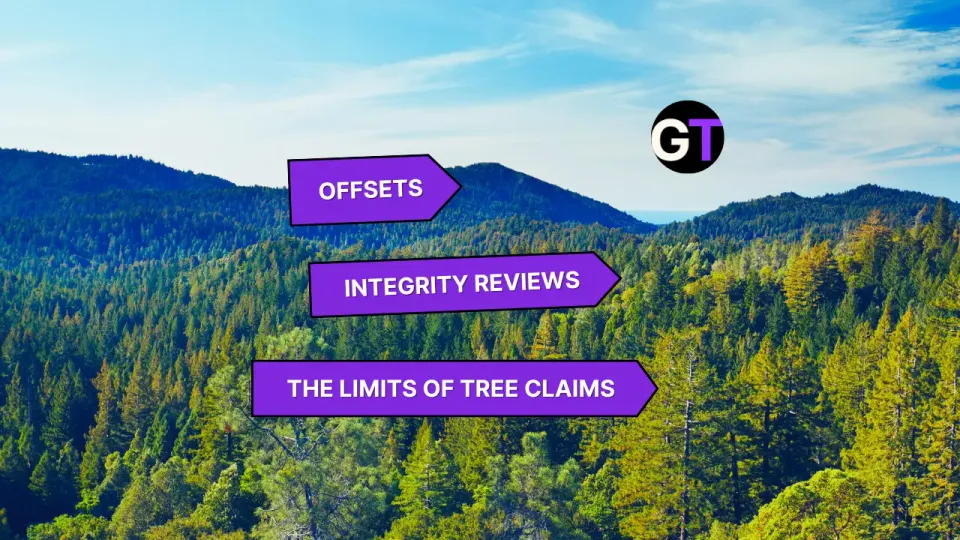Data for Trees: The Info We Need to Grow Canada's Forests
Data powers Canada’s reforestation future: A 2023 study reveals gaps in seed supply, storage, and forecasting—and how to plant smarter.

How to Plant 2 Billion Trees
Global reforestation efforts are growing at an unprecedented rate, with programs like Canada’s 2 Billion Trees initiative leading the charge. Yet, efforts to scale up the national campaign reveal a range of challenges—many stemming from a lack of sufficient data at critical points in the reforestation process.
A 2023 study by Melissa Spearing, Donnie McPhee and Judy Loo sheds light on these challenges, analyzing seed availability, genetic suitability, and the infrastructure required to ensure Canadian reforestation’s success. The findings underscore the critical role of openly available data in overcoming obstacles and improving restoration outcomes.
Current Bottlenecks in Canadian Reforestation
The overview highlights several bottlenecks in reforestation efforts, including:
- Inadequate Seed Supply: Many projects struggle to access genetically appropriate seeds in sufficient quantities. Seeds must match local climates and ecosystems to succeed, but stock is often limited.
- Storage Challenges: Only a fraction of organizations have the facilities to store seeds long-term while maintaining their viability. This limits their ability to act when reforestation opportunities arise.
- Lack of Long-Term Data: Data on tree survival rates, ecosystem recovery, and biodiversity impacts is sparse. This knowledge is critical to refine planting strategies and improve outcomes.
How to Fix It: Planting Smarter (With Open Data)
The report surveyed restoration practitioners across Canada, outlining key solutions needed to support the federal 2 Billion Trees goal. All of them will require more openly available information that is not currently being tracked, including:
- Seed Source Mapping: Tracking genetic diversity and regional suitability to ensure the right seeds are used for every location.
- Enhanced Storage and Processing Protocols: Invest in better seed banking infrastructure and protocols to preserve the quality and diversity of seeds over time. Knowledge of seed handling protocols is also limited and difficult to access.
- Demand and Supply Forecasting: Develop predictive models to match seed production with anticipated planting needs, factoring in species diversity and climate resilience.
- Monitoring Success: Use long-term tracking of planted trees’ survival, growth, and ecosystem benefits to assess what’s working and adapt strategies accordingly.
- Knowledge Sharing Platforms: Encourage sharing of species-specific guidelines, such as germination protocols, seed handling tips, and reforestation techniques.
Rooted in Data, Growing for the Future
Reforestation is one of the most powerful tools we have to combat climate change and restore ecosystems in Canada, but its success hinges on more than just manual labour. Open data is the foundation for effective, resilient, and scalable efforts.
By investing in better seed supply systems, tracking outcomes, and sharing knowledge openly, we can ensure that the federal 2 Billion Trees program is accessible to a wider range of actors and effectively using taxpayer funds. The seeds of today, nurtured by robust data, will grow into forests of hope for tomorrow.
Citation
Spearing, M., McPhee, D., & Loo, J. (2023). Sizing Canada’s National Seed Supply Chain: Preliminary Assessment Focused on Trees and Shrubs (Interim Report) . Natural Resources Canada, Canadian Forest Service.
Edited by Chris Harris

This work is licensed under a
Creative Commons Attribution 4.0 International License.




